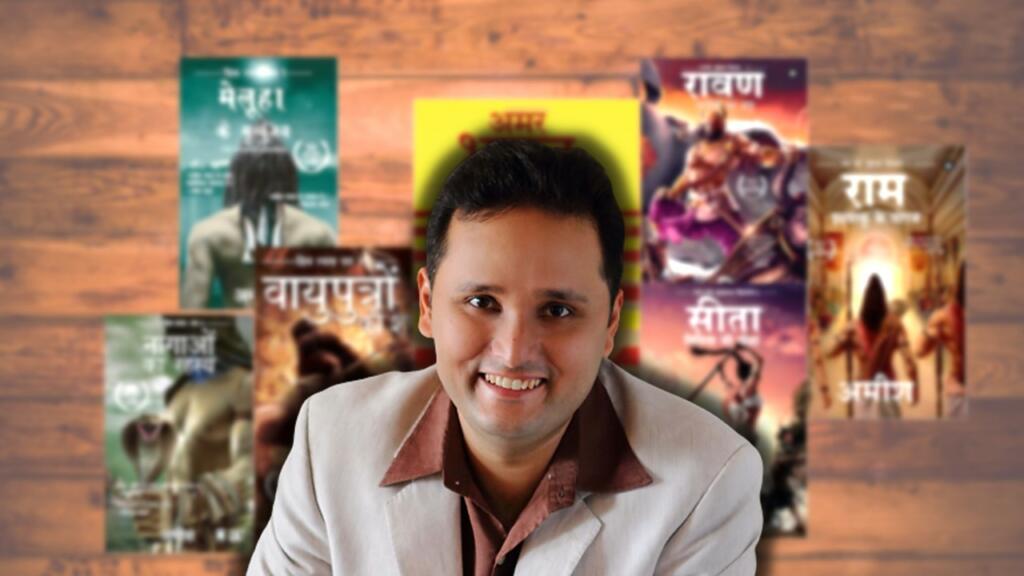While we’re busy castigating Manoj Muntashir and director Om Raut, we shouldn’t forget the master of deception, Amish Tripathi.
While we’ve been busy lampooning Muntashir, let’s not forget to give credit to Tripathi for his impressive ability to twist historical tales and make Manoj look like a cute toddler in comparison.
The Meluha Guy
In the midst of the recent Adipurush controversy and the not-so-witty dialogues of Manoj Muntashir, it seems that there is another master of sacrilege lurking in the shadows. Yes, none other than Amish Tripathi, the IIM grad turned banker turned author, who has been stealthily mocking our heritage with his creative liberties.
Most people know Amish Tripathi as the “Meluha” guy, but little do they know that he has taken creative liberties to a whole new level in his Ram Chandra series. Even someone with basic knowledge of the Ramayana would be taken aback by Tripathi’s portrayal of Ravana as a misunderstood anti-hero, almost Karna-like.
And to add fuel to the fire, he goes on to claim that Sita is Ravana’s offspring. Imagine the chaos if this were to be shown on the silver screen! No wonder the novel’s title mysteriously changed from “Raavan: Orphan of Aryavarta” to “Raavan: Enemy of Aryavarta.”
Also read: Understanding the Upanishads : Parmatma the Architect
Humanizing Deities
Now, let’s delve into the Meluha series, where Amish Tripathi takes it upon himself to humanize the revered deities. Bhagwan Ganesha, the elephant-headed god, is portrayed as a man with deformities, ostracized by the Meluhans as a Naga. It’s almost as if Tripathi wants us to believe that a god with the power to remove obstacles had trouble fitting in due to his appearance. And if that wasn’t enough, Devi Kali, Sati’s twin sister, is rejected by the Meluhans for being, well, “too black.” One wonders if Tripathi took inspiration from a particularly misguided beauty standard magazine from ancient times.
In his historical novel “Suheldev,” based on the Battle of Bahraich, Amish Tripathi manages to secularize Indian history in a rather amusing way. He introduces twin brothers portraying Ghazi Salar Masud, with one being hailed as a martyr. Thankfully, this novel is not yet popular in Bahraich, sparing Tripathi from the wrath of the locals. But one has to admire his audacity to alter historical events and manipulate characters to fit his narrative.
The Paradox of Creative Freedom
While we’re busy castigating Manoj Muntashir and director Om Raut, we shouldn’t forget the master of deception, Amish Tripathi. He fearlessly mocks our heritage in the name of creative liberty, leaving even Kalnemi, a renowned deceiver from mythology, a bit ashamed of his own tricks. Tripathi has certainly proven himself to be an expert in twisting tales and rewriting history to suit his storytelling.
As we discuss the boundary between creative freedom and respecting cultural heritage, Amish Tripathi’s work becomes a fascinating case study. While some argue that artistic expression should have no limits, it is essential to consider the responsibility that comes with portraying revered figures and historical events. Tripathi’s creative liberties may be entertaining to some, but they also provoke questions about the impact on cultural perceptions and beliefs.
The controversies surrounding Amish Tripathi’s works highlight a larger debate within the creative industry. Where do we draw the line between creative expression and cultural sensitivity? Is it acceptable to reshape historical narratives for the sake of entertainment? These questions require careful consideration, as the power of storytelling can shape our understanding of the world and influence how we view our own heritage.
Also read: Insta Motivators: Fake motivation gurus using fake Dharmic stories to fleece gullible morons
As we enjoy our share of witty banter and criticism aimed at Manoj Muntashir and Om Raut, let’s not overlook the deceptive storytelling of Amish Tripathi. With his twisted portrayal of characters and audacious creative liberties, he has managed to give Manoj Muntashir a run for his money.
So, the next time you find yourself caught in a debate about historical accuracy and creative license, remember to mention the name Amish Tripathi—the deceptive wordsmith who knows how to raise eyebrows, elicit a chuckle or two, and ignite a thought-provoking discussion about the balance between creative freedom and cultural sensitivity.
Support TFI:
Support us to strengthen the ‘Right’ ideology of cultural nationalism by purchasing the best quality garments from TFI-STORE.COM
